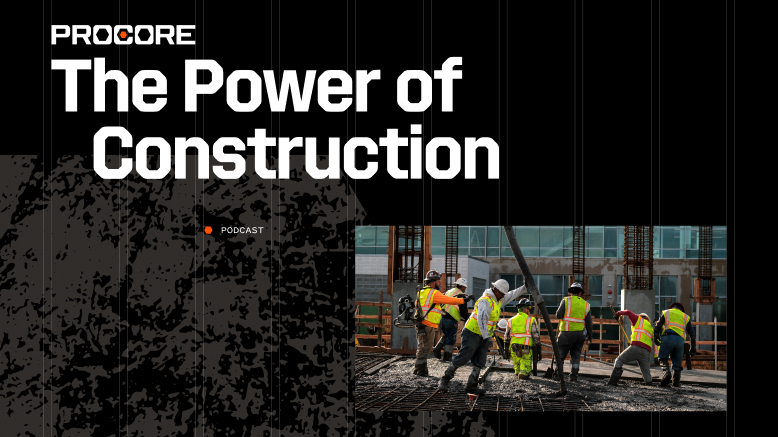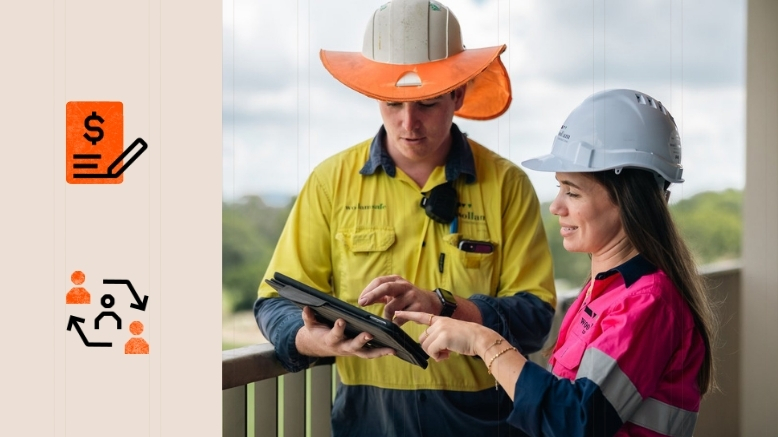— 12 min read
Successfully Navigating Public-Private Partnerships in Construction


Last Updated Sep 5, 2024

Michael Dantuono
Technical Brokerage Officer
Michael Dantuono is a Technical Brokerage Officer at Procore. He has 15 years of experience in insurance and risk management, with previous roles at both NFP and AON. Michael received his Bachelor of Science in Economics from the University of Scranton. He is based in New York.

Kristen Frisa
Contributing Writer
111 articles
Kristen Frisa is a contributing writer for Procore. She also contributes to a variety of industry publications as a freelance writer focused on finance and construction technology. Kristen holds a Bachelor of Arts in Philosophy and History from Western University, with a post-graduate certificate in journalism from Sheridan College. She lives in Ontario, Canada.
Last Updated Sep 5, 2024

A Public-Private Partnership (PPP or P3) is a contractual agreement that sees government agencies and private companies working together to build major infrastructure projects. Public-private partnerships allow governments to tap into private funding to complete large-scale projects, like roads, arenas, hospitals or broadband.
P3s are gaining popularity in the U.S., but acceptance of the method still varies considerably by state. However, many areas recognize that P3s can help leverage private expertise, funding, and risk tolerance to help deal with the extensive need for infrastructure renewal across the U.S.
This article will cover the progression of P3 projects from preplanning to closeout, discuss different organizational structures they may take and the challenges and benefits of using a P3 structure for delivering infrastructure assets.
Table of contents
Understanding PPPs in Construction
P3s involve long-term contracts between government agencies and private entities for the purpose of building, operating and maintaining new public assets. Below we’ll explore what happens during each phase of construction for projects under public-private partnerships.
Preplanning
The first stage of a P3 project involves the preplanning steps standard to any new asset development. The public agency conducts a needs analysis and feasibility study, cost projection, and risk assessment, then identifies the P3 as the optimal setup for the project.
The public agency determines an analysis of the value the asset will bring in and makes a plan for the competitive process that will identify a private entity partner for the project.
The private entity generally comprises a joint venture between multiple investors created specifically for a project. That joint venture will seek financing, often from a number of separate lenders. Complex financing, including debt, equity and bonds, is typical for this contract structure.
Procurement
The contractor procurement process for P3 projects follows much of the same process as those using other agreements. The public agency determines realistic requirements and specifications for the asset, when and how long the project should last, and the desired outcomes the asset will generate. The public agency will issue a Request for Qualification (RFQ), followed by a Request for Proposals (RFP) to qualified bidders.
Bidding
Once the public agency contracts with a private entity, the private entity will bid out to a designer and builder who may or may not also be a part of the financing entity. With large infrastructure P3s, the bidding-to-design process for construction firms is done concurrently with the private entity bid. Often, major trades are included in this process as well.
The contractor may be a joint venture made up of a number of building firms. After the construction of the project is complete, another contract will cover the asset’s operation. The public agency typically retains ownership of the asset, and each partner shares in the resulting income.
The relationships that are built during P3 projects can span decades — in some cases up to 50 years, as the asset’s operation and maintenance continue. Finding the right contact and creating the contracts for that work can be extensive.
Because of the complexity and early workload involved in a P3 project, it’s common for everyone involved to seek out partners who are familiar to them. Both the public entity and the private firms involved in the work may choose to seek out designers, lending and equity partners, contractors and subcontractors that they’ve worked with in the past. They may also lean heavily on time-tested contractual processes and procedures, but again, the process generally occurs in lockstep with the private entity bid.
Explore data and trends for building materials prices.
Get the latest U.S. retail prices and view historical trends for common building materials.
Construction on a Larger Scale
With all the contracting, subcontracting, and joint venture partnerships, P3s can seem complex and confusing. There are many intertwined relationships and governing structures involved in building such large projects, but in the end the basic bones of a P3 project are similar to any other construction project.
As with any other project, an owner designs a structure, goes through all the steps to find out the feasibility and ideal location for the asset, and then finds a contractor to complete the build. Then P3s add the additional steps of finding partners to finance and finally operate the asset.
Different Delivery Methods for P3 Projects
While P3 projects can use many of the project delivery methods common in construction, there are some methods that are unique to this type of project. Arrangements can be structured many different ways. Public agencies and their private sector partners must find the structure that works best for the project at hand.
| Delivery method | Definition |
|---|---|
| Design-Build | Fixed price contracts to jointly manage design and construction of an asset, often a roadway. The public agency retains ownership and covers financing through toll or tax revenues. |
| Design-Build Finance | Similar to the design-build setup, with the key difference that the private sector partner handles financing and is repaid through tax or toll funds. |
| Design-Build-Finance-Operate (DBFO) | After the asset is built, the private sector continues to operate and maintain the asset through a concession period, which could last decades. |
Advantages of P3 Contracts
P3s are becoming ever more popular for large infrastructure projects. Some notable examples of recent P3 projects are the Goethals Bridge in Staten Island, and New York’s LaGuardia Airport Terminal B redevelopment. However, it’s only in the last decade or so that the U.S. has used P3 arrangements with increased frequency. What’s the draw?
Private Sector Financing
One of the main advantages of P3s for a public agency embarking on a new construction program is private sector financing. There is no need to fund a project with toll funds, taxes, or public borrowing, and risk is largely transferred to the private sector. The public entity will seek out a private entity to partner with to deliver the asset.
In most cases, the entity is not a single business but a special-purpose private entity that was created specifically for funding the project at hand. The private partner will consist of a collection of investors tied together through joint venture agreements. The arrangement is politically advantageous and leaves public funds available for other purposes.
Built-in Performance Incentives
Another advantage of P3s for public agencies is that they can often fetch lower costs and higher levels of service than the public agency could otherwise manage. The terms of a P3 agreement generally provide the private partner with financial rewards for efficiency. Because the private entity often receives profits from the asset’s operation, it has reason to hustle to achieve those profits sooner.
P3 structures also provide an incentive for greater cost controls. Payment schedules are generally fixed before building begins, so cost-effective building will result in wider profit margins for the private company.
Sharing Risk
Construction contracts outline the way the parties involved will share any risk the project poses. P3s generally put more of the risk off of the public agency and into the private sector. The private entity partner bears the bulk of the responsibility for the asset’s design, construction, and operation, but they’ll often try to cap the risk by funding it via insurance coverage or other methods.
When a municipality embarks on a P3 agreement to build a toll road with a private entity, for example, the private entity takes on the risk from potential weather events and regulatory changes. There may be clauses in the contract that share the risk in the event that the road is well-used and brings in enough revenue to support its upkeep. But the private entity partner will further pass along risk by taking out insurance for major weather events that cause a delay in the asset’s use and therefore a delay in the revenue it’s meant to bring in.
Challenges of Working with P3s
P3s have offered public agencies new opportunities for developing assets, but there have also been significant failures of P3 projects. Due to the size, scale and duration of operational agreements for these projects, unaccounted for problems may arise long after the project’s completion.
Take the Sydney Harbor Tunnel project in Australia, for example. When the original underwater tunnel was first constructed in 1992, dredging a trench onto the harbor was the go-to method for the submerged tunnel. 30 years later when construction on a new section of the tunnel began, public scrutiny about possible release of toxic chemicals from the previous strategy to build the tunnel led to project executives scrapping the original plan and opting for tunnel-boring machines to dig out the underwater section instead.
Additionally, financial concerns about the same project grew when it became time toe recover a AUS $223 million loan owed by the Sydney Harbour Tunnel Company to NSW taxpayers. Despite declining toll receipts and increasing expenses for the tunnel, the New South Wales government did not receive payment that was due once the tunnel was turned over to public ownership in 2022. The payment arrangement was made by Australia’s former government leadership.
Below are some of the most common downsides to P3 projects:
Contract Negotiation
P3s are more complicated to set up. All of the negotiations regarding the risk allocation, for instance, can take a lot of back-and-forth, which can take time and cost money. In jurisdictions that have some experience with P3s, there may be some standard contracts and a general understanding of what’s expected from the involved parties, all of which can help to shorten negotiation time.
In less mature P3 markets, that legwork represents extra time, money, and effort going into the early stages of a project.
Overall, it is important to understand how certain risks can be transferred to third parties. Insurance and/or surety companies, for example, can assume certain risks for a fee (premium).
Offloading Risk
The P3 is a great way to offload some project risk onto the private sector, but that transfer doesn’t come for free. Private sector players may increase their charges in an effort to offset that risk.
Additionally, private entities will typically have more of a responsibility for typical construction risks. Delays, defects, labor shortages, price escalations, supply chain issues along with some allocation of the revenue risk may fall on the private entity’s shoulders. Also, force majeure risks should be addressed to the extent, not transferred to insurance markets.
Political Risk
A change in political tides can lead to a pause, or complete redirection of a project’s trajectory. This can also result in financial loss for the public and private agencies.
If a newly elected public official refocuses public effort and the project is called off, for example, or if the private sector entity takes a risk and winds up in default, the agency and the private sector entity have sunk expenses they won’t be able to recuperate.
Public scrutiny and lack of public support can also lead to financial losses on these types of projects.
Explore data and trends for building materials prices.
Get the latest U.S. retail prices and view historical trends for common building materials.
Best Ways to Execute a P3
What are the best ways to pull off a great P3 project? As with any other project, the keys come down to solid collaboration, ongoing communication, and managing project risks.
Work with trusted partners.
Any construction project carries with it an element of risk. Take some of the uncertainty out of the project by working with the familiar — partnering with known and trusted design firms, lenders, and equity partners, working with time-tested contractual processes and procedures, and taking on known subcontractors can reduce risk and increase confidence.
Allocate risk strategically.
Contracts should allocate risk clearly and definitively between project partners at the outset of a project. Changes to project plans or schedules that result in additional costs are often assigned depending on who was responsible for the change.
Sometimes the contractor stays responsible, while other times the subcontractors will have to cover the costs. In other cases, additional costs go upstream to the construction joint venture or the special purpose entity that's financing it or the governmental agency. Who bears the risk for added costs due to project changes will all depend on the way the contract is laid out and what necessitated the changes.
Because P3 agreements often extend through the operation and maintenance cycles of an asset, some of the risk involved in a P3 project is that the completed asset won’t generate the expected level of income. This risk should fall to whoever can bear it best. Often, it is the private sector entity that bears the risks that ordinarily remain with the project owner. The revenue risk, however, may vary depending on the reason for the actual discrepancy between expected and actual revenue.
Using the toll road example mentioned above, the public agency and the private sector entity would lay out acceptable risk amounts. If they were expecting that the toll road would generate U.S. $1 per day in revenue but they’re only generating $0.90 per day, the contracts should stipulate if the private entity will accept $0.1 of that revenue differential.
In jurisdictions that lack an accepted and uniform contract for P3 relationships, there might be a need for additional negotiations on these details.
Get the proper surety bonds.
Surety bonds help protect all parties from many kinds of risk, including those stemming from financial loss and political change. P3 partners may protect themselves by requiring that the contractors acquire surety to ensure the contractors involved will deliver the work as contracted.
Surety bonds work to protect P3 partners by offering an independent assessment of the contractor’s ability to perform the contract and complete its obligations. Should the contractor default, the surety can provide funds to complete the contract and meet pay subcontractor and supplier claims for the project, and finally deliver a complete, viable project.
What’s Next for P3s
Like any other construction arrangement, P3s have their benefits and their detractors. Put together carefully, P3 arrangements can take advantage of the strengths of both private and public parties to carry off a time-effective and efficient public asset.
Because there are so many different structures a P3 agreement can follow, innovative use of these partnerships could expand to benefit both private and public sector players.
Was this article helpful?
Thank you for your submission.
83%
17%
You voted that this article was . Was this a mistake? If so, change your vote
Scroll less, learn more about construction.
Subscribe to The Blueprint, Procore’s construction newsletter, to get content from industry experts delivered straight to your inbox.
By clicking this button, you agree to our Privacy Notice and Terms of Service.
Thank you!
You’re signed up to receive The Blueprint newsletter from Procore. You can unsubscribe at any time.
Categories:
Written by

Michael Dantuono
Technical Brokerage Officer
Michael Dantuono is a Technical Brokerage Officer at Procore. He has 15 years of experience in insurance and risk management, with previous roles at both NFP and AON. Michael received his Bachelor of Science in Economics from the University of Scranton. He is based in New York.
View profile
Kristen Frisa
Contributing Writer | Procore
111 articles
Kristen Frisa is a contributing writer for Procore. She also contributes to a variety of industry publications as a freelance writer focused on finance and construction technology. Kristen holds a Bachelor of Arts in Philosophy and History from Western University, with a post-graduate certificate in journalism from Sheridan College. She lives in Ontario, Canada.
View profileExplore more helpful resources

What Happens When Data Drives the Business?
Construction has long been seen as a low-margin industry. But what if the real problem isn’t the margins—it’s how decisions get made? In episode 17 of The Power of Construction,...

Vet Contractors with Confidence: A Guide to Smart Bidder Selection
Selecting the right bidder is one of the most consequential decisions a construction team makes — yet it often happens under tight deadlines, with limited visibility into the long-term implications....

The Construction Bid Interview & Follow-up: Closing the Deal
During construction project bidding, the interview is often the last part of the request for proposal (RFP) process and one of the most influential. For teams that advance to the...
Construction Business Development: Tracking and Winning the Right Opportunities
Construction business development isn’t just a response to deadlines: It’s a long-term strategy rooted in focus, visibility and timing. Delays, funding gaps and market pressure have made it harder to...
Free Tools
Calculators
Use our calculators to estimate the cost of construction materials for your next project.
Templates
Find a template to help you with your construction project tasks.
Material Price Tracker
Get the latest U.S. retail prices and view historical trends for common building materials.
Glossary
Explore key terms and phrases used in the industry.
